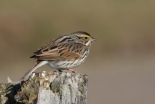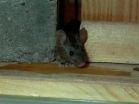(Press-News.org) In the fight to improve global health, alleviate hunger, raise living standards and empower women in the developing world, chickens have an important role to play.
Jagdev Sharma, a researcher at the Center for Infectious Diseases and Vaccinology at Arizona State University's Biodesign Institute has been investigating the advantages of a more productive species of chicken for villagers in rural Uganda. He reports his findings this week at the American Veterinary Medical Association Meeting in Saint Louis, Missouri.
The star of this developing story is a type of chicken known as the Kuroiler. As Sharma notes, it has already shown enormous promise in lifting villagers out of the cycle of economic poverty and nutritional stress in some of the poorest regions:
"The success of the Kuroiler chicken in India, where it was first introduced, makes us hopeful for similar improvements in rural Africa, particularly, in Uganda, where our initial results show the Kuroiler significantly outperforming native chickens."
Kuroilers are hybrid chickens, well suited to resource-poor village environments. They have been genetically selected to provide both meat and eggs and are able to survive and thrive on agricultural and household waste, requiring no additional feed.
The birds were developed by Keggfarms, a company based in Gurgaon, India and known for its pioneering efforts to improve rural conditions and provide nutritional security through household poultry keeping. Kuroilers were distributed in India to over 1 million households.
Women in rural locales in Africa (as well as India) are often responsible for raising chickens, which supply meat and eggs, as well as providing a vital source of income. Sharma is hoping to duplicate the Indian success story with Kuroilers in Africa, thanks to collaboration between Arizona State University and the Government of Uganda.
Chickens and their eggs are a vital source of nutrition in Uganda, with about 33 million birds produced annually. Of these, the majority—around 28.4 million—are village flocks, with the remaining 4.6 million coming from commercial sources.
Village chicken flocks typically consist of 5-20 chickens per family. As Sharma notes however, such flocks are often insufficient to meet the nutritional and economic needs of village families. Indigenous chickens have a mortality rate of 40-80 percent. Native hens only produce around 40 eggs per year, while roosters provide limited sources of meat, weighing on average 1.5-2.0 kg.
Sharma and his group explored the performance of indigenous chickens, comparing them with the newly introduced Kuroilers. The new chickens are similar to indigenous chickens in terms of their feather colors for camouflage, agility in escaping predators and resistance to disease. Kuroilers differ however in other important features, including their hatchability, adult weight and number of eggs produced.
For the study, 10 Kuroiler and 10 local chickens were distributed to each of 100 families in 5 districts of Uganda. As a control, 100 Kuroiler and 100 native chickens were also held in confinement at a facility in Entebbe. The Kuroiler eggs were sent from India while the local eggs were held in Entebbe for 6 days before setting. Kuroilers and native chickens were assessed for their survival, weight gain, egg production and acceptance by farmers.
The fertility and hatchability of Kuroiler eggs was significantly better than for native eggs, with 80 percent of Kuroilers successfully hatching compared with 47 percent of native eggs. Further, in four districts in Uganda where farmers received Kuroilers, the chickens showed a survival rate of 84%, comparable to that of indigenous birds. Body weight gain for Kuroilers was significantly higher as was their total body weight in adulthood—3kg for male Kuroilers as opposed to 1.5-2.0 for native male chickens.
The most dramatic advantage of the Kuroilers however was their egg laying capacity, which outpaced native species in both village-scavenging settings and for chickens raised in confinement. Kuroilers delivered around 200 eggs annually compared with 40 for native species.
In summation; the study demonstrated that Kuroilers represent a 133 percent increase in meat production, and a 462 percent increase in egg production. These figures also point to a 341 percent increase in income for rural poultry farmers—often village housewives—an important stepping stone toward nutritional and economic security in this poor region.
Sharma is hopeful that government and private contributions to the successful Kuroiler project will significantly extend the reach of this initiative, improving village conditions in many other areas of Africa, where poverty and deprivation remain common.
INFORMATION:
Written by: Richard Harth
Science Writer: The Biodesign Institute
richard.harth@asu.edu
A new breed: Highly productive chickens help raise Ugandans from poverty
2011-07-22
ELSE PRESS RELEASES FROM THIS DATE:
Fermilab experiment discovers a heavy relative of the neutron
2011-07-22
Scientists of the CDF collaboration at the Department of Energy's Fermi National Accelerator Laboratory announced the observation of a new particle, the neutral Xi-sub-b. This particle contains three quarks: a strange quark, an up quark and a bottom quark (s-u-b). While its existence was predicted by the Standard Model, the observation of the neutral Xi-sub-b is significant because it strengthens our understanding of how quarks form matter. Fermilab physicist Pat Lukens, a member of the CDF collaboration, presented the discovery at Fermilab on Wednesday, July 20.
The ...
GOES satellite sees a triple header in the tropics
2011-07-22
The GOES-13 satellite captured a triple-header in the tropics today when it captured three tropical cyclones in one image in the Northern Hemisphere.
A visible image taken from the GOES-13 satellite on July 20 at 14:45 UTC (10:45 a.m. EDT) and shows a consolidating low pressure area called System 99L in the eastern North Atlantic Ocean, Tropical Storm Bret several hundred miles east of South Carolina, and a large Hurricane Dora off the west coast of Mexico. The image was created by the NASA/NOAA GOES Project at NASA's Goddard Space Flight Center in Greenbelt, Md.
System ...
It's no sweat for salt marsh sparrows to beat the heat if they have a larger bill
2011-07-22
Birds use their bills largely to forage and eat, and these behaviors strongly influence the shape and size of a bird's bill. But the bill can play an important role in regulating the bird's body temperature by acting as a radiator for excess heat. A team of scientists have found that because of this, high summer temperatures have been a strong influence in determining bill size in some birds, particularly species of sparrows that favor salt marshes. The team's findings are published in the scientific journal Ecography, July 20.
Scientists at the Smithsonian Migratory ...
Unlisted ingredients in teas and herbal brews revealed in DNA tests by high school students
2011-07-22
Take a second look at your iced or steaming tea. Guided by scientific experts, three New York City high school students using tabletop DNA technologies found several herbal brews and a few brands of tea contain ingredients unlisted on the manufacturers' package.
The teen sleuths also demonstrated new-to-science genetic variation between broad-leaf teas from exported from India versus small-leaf teas exported from China.
Guided by DNA "barcoding" experts at The Rockefeller University, an ethno-botanist at Tufts University and a molecular botany expert at The New York ...
UCSF study highlights success of brain surgery for severe epilepsy
2011-07-22
Two-thirds of people with severe and otherwise untreatable epilepsy were completely cured of their frequent seizures after undergoing neurosurgery at the University of California, San Francisco Medical Center, according to a new study that examined 143 of these patients two years after their operations.
The new study not only shows the promise of this type of neurosurgery at treating severe epilepsy, it also highlights how research into brain imaging may help to further improve results for people who have such operations.
"Surgery can be a powerful way to stop this ...
Whole sequence variation map reveals insight into evolutionary studies of rhesus macaque
2011-07-22
July 20, 2011 – BGI (previously known as the Beijing Genomics Institute), the largest genomics organization in the world, and Kunming Institute of Zoology, Chinese Academy of Sciences, together published the whole sequence variation map of rhesus macaque (Macaca mulatta) in Genome Biology on July 6th, 2011 (http://genomebiology.com/2011/12/7/R63). The study provides available resources for evolutionary and biomedical research.
Rhesus macaque, also called the Rhesus monkey, is one of the best known species of old world monkeys. Human and Rhesus macaque share a most recent ...
Cedars-Sinai movement disorders expert on international task force for dystonia treatment
2011-07-22
LOS ANGELES (July 20, 2011) –Neurologist Michele Tagliati, MD, director of the Movement Disorders Program at Cedars-Sinai Medical Center, served on an elite international task force commissioned by the Movement Disorder Society to provide insights and guidance on deep brain stimulation for dystonia, an uncommon condition that causes sustained, sometimes crippling muscle contractions.
The resulting articles, describing the data reviewed and outlining the group's conclusions, recommendations and points to be addressed in future research, published online last month in ...
Computer simulations aid understanding of bacterial resistance against commonly used antibiotics
2011-07-22
A recent study into the interactions between aminoglycoside antibiotics and their target site in bacteria used computer simulations to elucidate this mechanism and thereby suggest drug modifications.
In the article, which will be published on July 21st in the open-access journal PLoS Computational Biology, researchers from University of Warsaw, Poland, and University of California San Diego, USA, describe their study of the physical basis of one bacterial resistance mechanism - mutations of the antibiotic target site, namely RNA of the bacterial ribosome. They performed ...
Chromosome number changes in yeast
2011-07-22
Researchers from Trinity College Dublin have uncovered the evolutionary mechanisms that have caused increases or decreases in the numbers of chromosomes in a group of yeast species during the last 100-150 million years. The study, to be published on July 21st in the open-access journal PLoS Genetics, offers an unprecedented view of chromosome complement (chromosome number) changes in a large group of related species.
A few specific cases of chromosome number changes have been studied in plants and animals, for example the fusion of two great ape chromosomes that gave ...
'Freaky mouse' defeats common poison
2011-07-22
HOUSTON -- (July 21, 2011) -- Over millennia, mice have thrived despite humanity's efforts to keep them at bay. A Rice University scientist argues some mice have found two ways to achieve a single goal -- resistance to common poison.
New research by Michael Kohn and colleagues, reported today in the online journal Current Biology, analyzes a genetic mutation that has given the ordinary European house mouse this extraordinary ability.
The gene in question, vkorc1, is present in all mammals and manages vitamin K. A mutation to vkorc1 makes mice resistant to warfarin, ...





